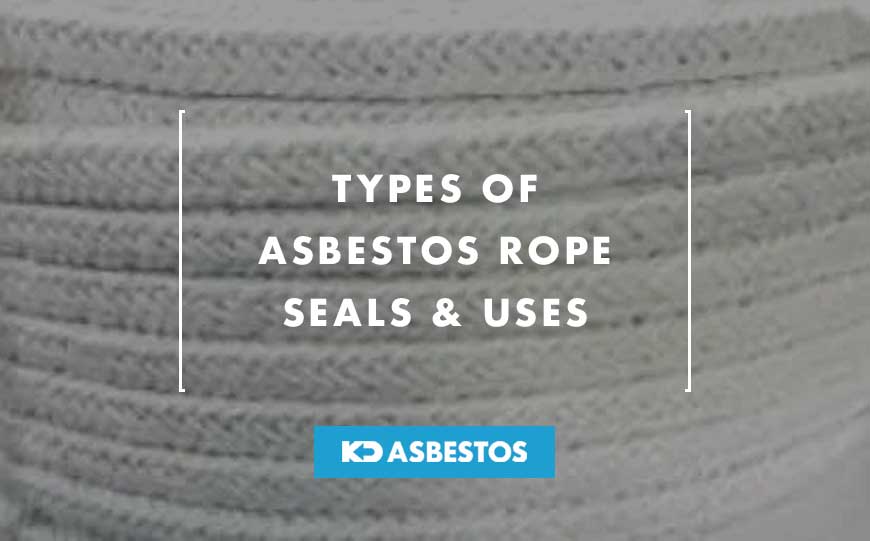
Asbestos rope is a type of heat-resistant cord made from asbestos fibers.
It was commonly used in various industries before the health hazards of asbestos became more widely understood.
Asbestos rope is known for its durability and excellent heat resistance, which makes it ideal for high-temperature applications.
Below we explore more about this type of asbestos containing material, its uses, where it’s found and its potential health dangers.
Table of Contents
What is Asbestos Rope?
Asbestos rope was commonly used in various industries mainly because of its heat-resistant properties.
It was used for applications that required sealing or insulation in high-temperature environments.
Asbestos rope was commonly used as a seal or gasket in engines and boilers, where it could withstand high temperatures as well as prevent leaks.
It was also used as an insulating pipe lagging and around other heat-producing equipment, among others.
What is Asbestos Rope Used For?
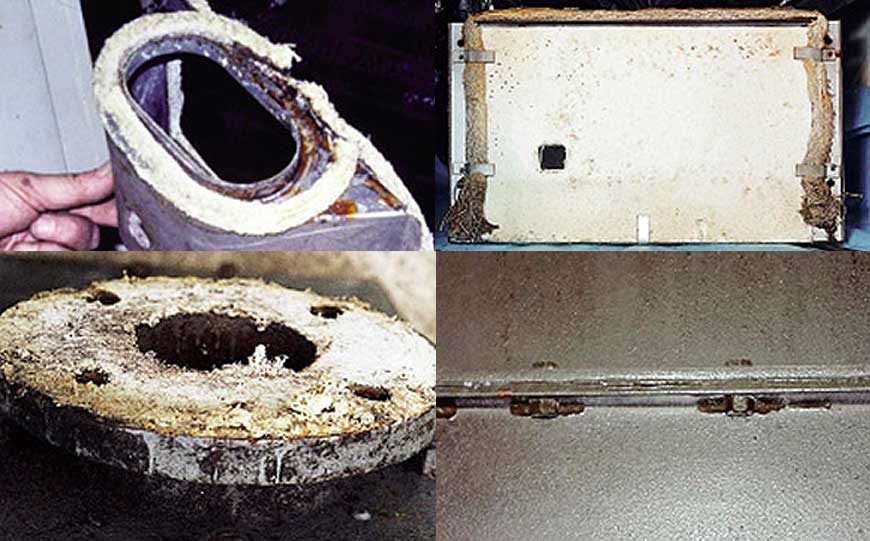
Asbestos Rope Seals & Gaskets. Image credits: HSE
Some common uses of asbestos rope included:
- Boiler insulation: asbestos rope was commonly used to insulate boilers and other high-temperature equipment.
- Pipe insulation: asbestos rope was used to insulate pipes and other equipment that carried hot fluids or gasses.
- Sealant: it was used as a sealant in engine and boiler applications to prevent leaks.
- Fireproofing: it was used as a fireproofing material in buildings and structures.
- Packing material: asbestos rope was used as a packing material in pumps and valves to prevent leaks.
- Electrical insulation: in certain applications.
- Seals and gaskets: in gas or electric heating appliances.
Where is Asbestos Rope Found?
Asbestos rope can still be found in older buildings and structures.
More particularly those built before the 1980s, because it was used in various applications to make the most of its properties.
Some areas where asbestos rope may be found include:
- Boiler rooms: Asbestos rope was commonly used to seal and insulate boilers and other high-temperature equipment.
- Plumbing systems: It was used to insulate pipes and as a sealant in plumbing systems.
- HVAC systems: Asbestos rope was used to insulate air ducts and as a sealant in HVAC systems.
- Electrical systems: It was used as electrical insulation in certain applications.
- Construction materials: Asbestos rope was commonly used in certain construction materials, such as in cement and roofing felt.
It’s important to note that asbestos rope is no longer used in new construction projects due to the known health risks associated with asbestos exposure.
If you suspect that your building or home may contain asbestos rope or other asbestos containing materials, it’s important to have asbestos testing carried out.
If necessary, it should be properly removed by a licensed asbestos contractor.
Types of Asbestos Rope
The main types of asbestos rope include:
Twisted Asbestos Rope
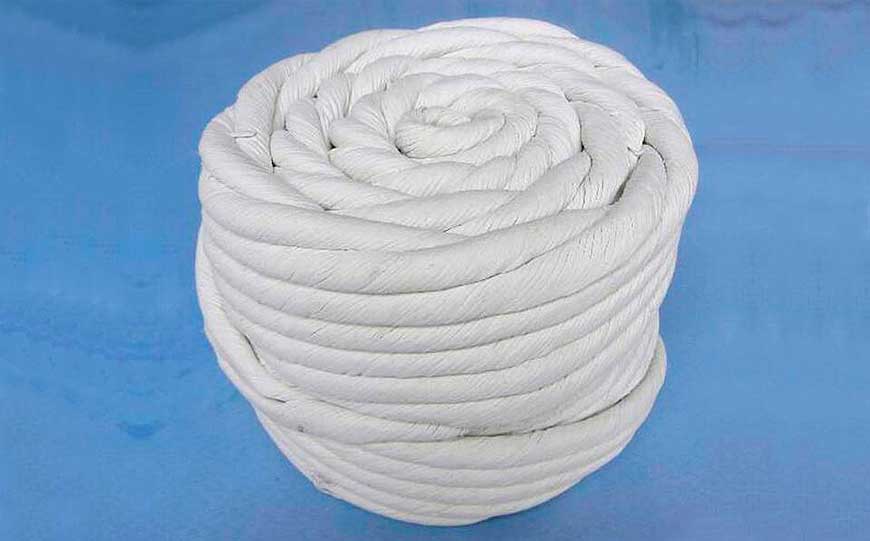
Twisted Asbestos Rope. Image credit: Dongyue
Twisted asbestos rope was made by twisting together several strands of fibers to create a dense and sturdy rope.
Twisted asbestos rope was commonly used as a sealant for boilers and other high-temperature equipment, caulking, sealing, as well as in insulation applications.
The type of asbestos fibre used in this type of rope was chrysotile.
Square Asbestos Rope
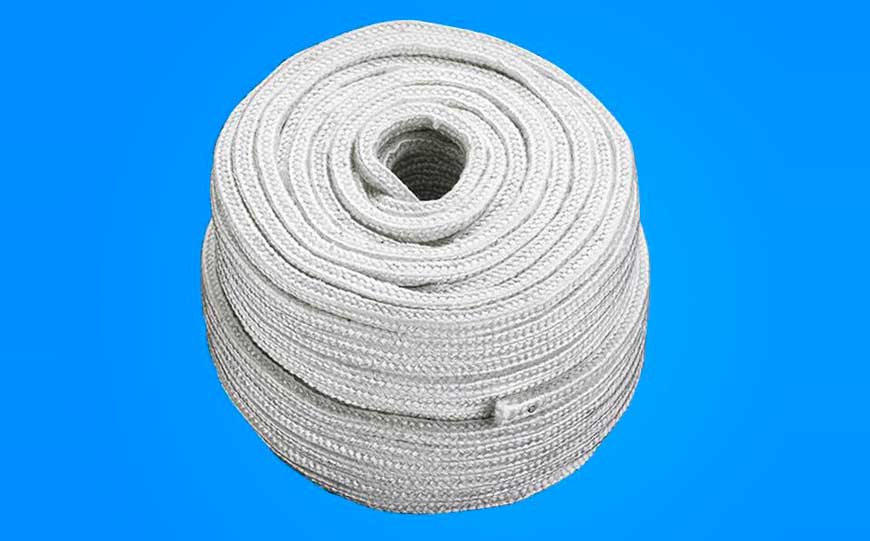
Square Asbestos Rope. Image credit: Dongyue
This type of asbestos rope is composed of long asbestos fibre yarn.
As the name implies, it is woven into a square form.
This type of asbestos was generally used as a heat insulator or as a sealant.
Asbestos Lagging Rope
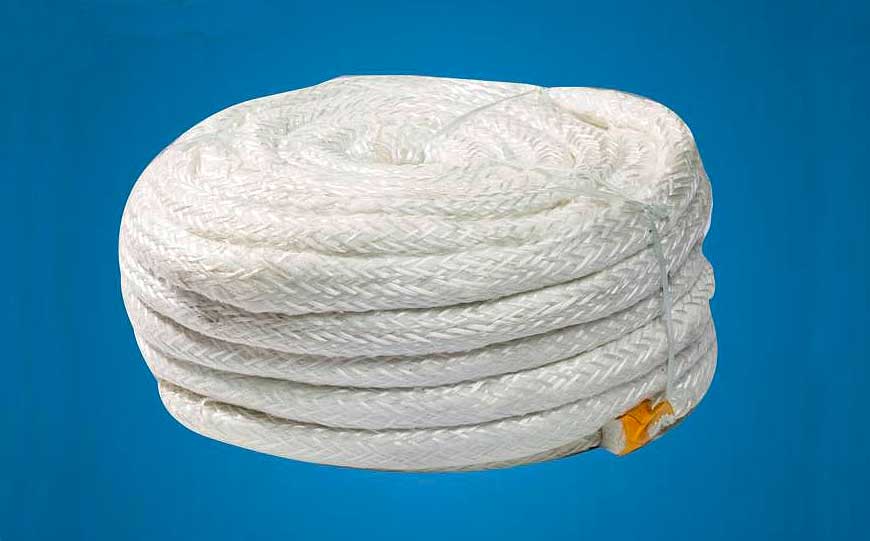
Asbestos Lagging Rope. Image credit: Dongyue
Asbestos lagging rope comprises two layers.
The outer layer is braided with dusted asbestos, whereas the inner layer is filled with ceramic.
Asbestos lagging rope has the advantages of being very elastic and flexible.
As a result, it was commonly used for heating pipelines where flexures are important.
It is also used when constant vibrations are involved.
Is Asbestos Rope Dangerous?
Asbestos is now known to be a carcinogenic substance that can cause various symptoms including lung cancer and other respiratory diseases when inhaled or ingested.
As a result, the use of asbestos has been largely banned in many countries.
Alternative materials are now used in place of asbestos rope and other asbestos-containing products.
As with any other asbestos containing material, there’s a considerable danger associated with asbestos rope too.
However, if asbestos rope is present in your property and is not in a bad condition, there’s no need to be immediately concerned.
The dangers associated with asbestos exposure present themselves when the fibres become airborne.
This may occur if the asbestos rope is damaged, or if any works being carried out involve maintenance or removal.
In such cases it’s highly recommended to consult an asbestos professional to test a sample, and act according on their advice.
Conclusion
The use of asbestos rope has been largely phased out and nowadays much safer, non-toxic options are available.
If you’re unsure whether there’s asbestos rope in your property, it’s best to contact an asbestos professional for testing any materials found.
If required, safe and appropriate removal and disposal of the material can then be carried out.